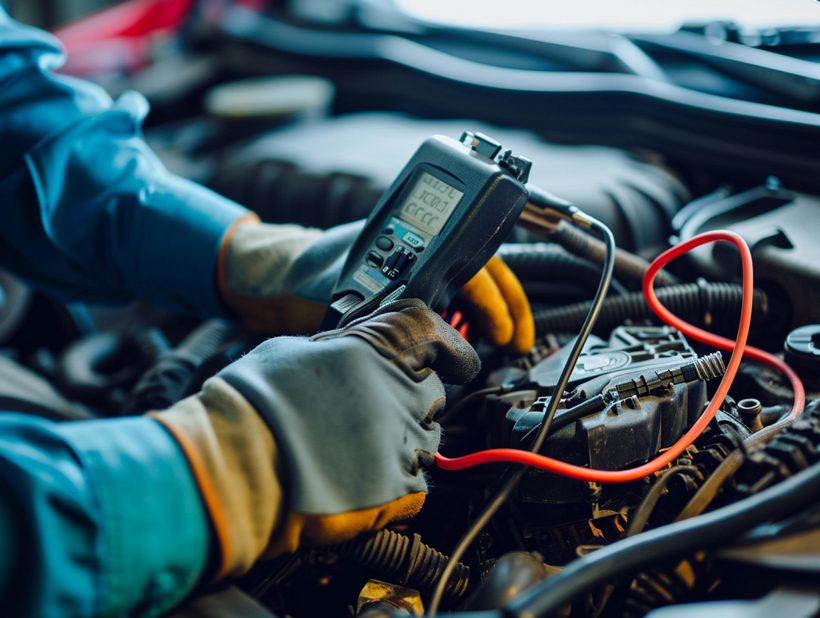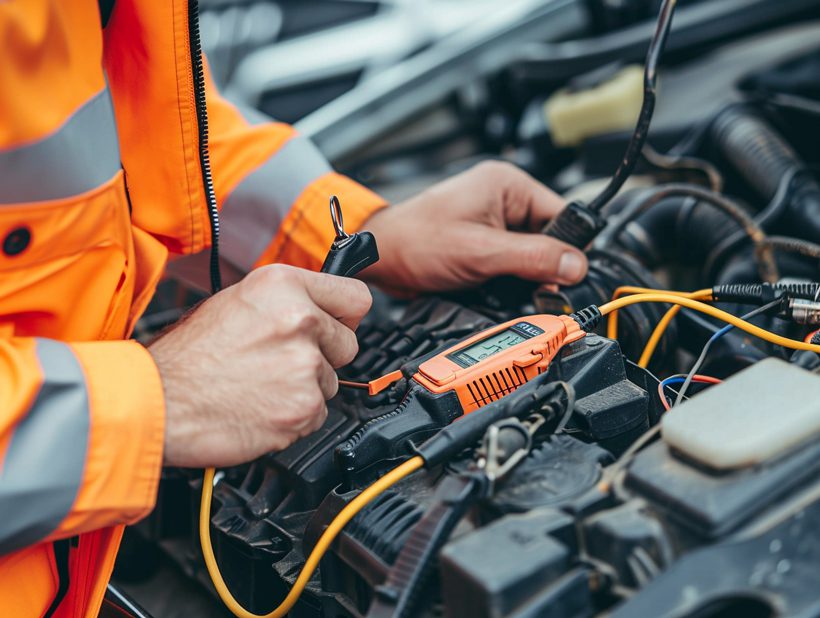We’ve all been there: you start your car, and instead of purring like a kitten, it coughs, sputters, or worse‚ stalls completely. It’s frustrating when your car won’t hold idle, leaving you stranded with a high idle or stalling issues. But don’t worry; we’re here to help you diagnose and fix the problem.
Understanding why your car is acting up is half the battle. Whether it’s a dirty air filter or a faulty idle control valve, we’ve got the insights you need to get back on the road. Let’s dive into the common causes and solutions for when your car refuses to idle smoothly.
Dealing with a high idle or a car that stalls can be daunting, but with the right approach, it’s a fixable issue. We’ll guide you through troubleshooting techniques that’ll save you time and money, ensuring your vehicle is running reliably once again.
Common Causes of High Idle
When we’re faced with a car that won’t hold idle, it’s crucial to pinpoint the underlying causes. High idle can stem from a variety of issues, each affecting the performance and reliability of our vehicle. Let’s break down some common culprits:
- Vacuum Leaks: One primary reason for a high idle speed is a vacuum leak. This occurs when there is a break in the vacuum lines or gaskets, allowing extra air to flow into the engine. The result? An imbalance in the air-to-fuel ratio.
- Throttle Body Issues: The throttle body controls the amount of air entering the engine. If it’s dirty or malfunctioning, the airflow won’t be properly regulated. Cleaning or replacing the throttle body can address this problem.
- Idle Control Valve: A faulty idle control valve can cause erratic idle behavior. It manages the engine’s idle speed by regulating airflow. If it’s stuck or dirty, our idles become unpredictable.
- Sensors and Computers: Modern cars are equipped with an array of sensors and a central computer (ECU) that monitor the engine’s performance. Malfunctioning sensors like the throttle position sensor (TPS) or a misconfigured ECU can lead to an elevated idle speed.
- Fuel System Problems: Issues with the fuel injectors or fuel pressure regulator may contribute to the dilemma. Either can result in too much fuel being delivered, disrupting the delicate balance required for a smooth idle.

Let’s look at these factors in terms of frequency and possible signs:
| Factor | Frequency | Possible Signs |
|---|---|---|
| Vacuum Leaks | Common | Hissing noise, performance loss |
| Throttle Body Issues | Variable | Rough idle, throttle unresponsiveness |
| Idle Control Valve | Regular | Stalling, erratic idle |
| Sensors and Computers | Often | Check Engine light, poor economy |
| Fuel System Problems | Occasional | Misfires, smell of fuel |
By addressing these common causes, we improve our chances of eliminating high idle issues without the need for professional assistance. Careful inspection of these elements will bring us closer to restoring the car’s proper idle behavior. Remember, it’s essential to address any unfamiliar sounds or alerts promptly to prevent further complications.
Symptoms of a Stalling Car
Identifying the symptoms of a stalling car is crucial for timely intervention. We’ve outlined key indicators that suggest your vehicle may be experiencing stalls or is on the verge of doing so.
- Sudden Power Loss: When your car’s engine shuts off unexpectedly while driving or coming to a stop, it’s a clear sign of stalling. This can be both a safety concern and a symptom of underlying engine troubles.
- Irregular Idle: An engine that fluctuates between high and low RPMs or appears to struggle to maintain a smooth idle can point to a stalling problem.
- Unresponsive Acceleration: If stepping on the gas pedal doesn’t produce the expected increase in speed, or if there’s a delay, stalling may be imminent.

Another symptom to watch out for includes:
- Engine Misfires: Occasional popping sounds or jolts during operation may indicate misfires, which could lead to stalling if not addressed.
Moreover, don‚Äôt overlook the role of your vehicle’s warning lights. The Check Engine Light can be a precursor to stalling episodes, signaling that it‚Äôs time to inspect the engine control system. Additionally, a Fuel System Warning Light could point to issues within the fuel system that may cause the car to stall.
Understanding how to recognize these symptoms will empower us to react promptly. We should remember that a stalling car isn’t just an inconvenience; it’s potentially dangerous, especially if it occurs in heavy traffic or at high speeds. Regular maintenance and paying attention to your car’s performance are your best defenses against these issues.
Experiencing any of these symptoms warrants further investigation. In some cases, a quick response could avert more significant damage or even a roadside emergency. We’ll delve into actionable steps in the following sections that can help us diagnose and ideally rectify these stalling quandaries.
Understanding Idle Control Valve
When tackling a car that won’t hold idle, it’s essential we examine the idle control valve, a crucial component that maintains a consistent idle speed. This valve regulates the amount of air entering the engine when the throttle is closed, playing a pivotal role in the vehicle’s performance.

The Role of the Idle Control Valve
Typically located on or near the throttle body, the idle control valve, also known as the idle air control valve, helps balance the air-fuel mixture by adjusting the engine’s idle speed. It acts as a bypass around the throttle plate to maintain proper airflow and engine speed. When it malfunctions, we might notice:
- Erratic idle speeds
- Engine stalling
- Difficulty starting the vehicle
Signs of a Faulty Idle Control Valve
A failing idle control valve often presents distinct symptoms that we should be aware of:
- The engine idles too high or too low
- Inconsistent RPMs
- The vehicle may stall when coming to a stop
Troubleshooting the Idle Control Valve
Before jumping to conclusions, we should perform some checks to confirm a faulty idle control valve:
- Listen for unusual noises from the valve when the engine is running.
- Check the valve for signs of carbon buildup or obstruction.
- Inspect the electrical connections for any signs of corrosion or looseness.
Cleaning or Replacing the Valve
Sometimes, cleaning can restore the valve’s functionality. If that doesn’t work, replacement becomes necessary. We’ll walk through the steps:
- Disconnect the battery:
- Remove the idle control valve:
- Clean or replace the valve:
- Reinstall the valve:
Steps to Diagnose High Idle and Stalling Issues
When we’re faced with a car that won’t hold idle, diagnosing the problem is key. We’ve outlined a simple but effective strategy to pinpoint the root cause of high idle and stalling issues.

Conduct a Visual Inspection
First, we’ll pop the hood to conduct a visual inspection. We’re looking for any obvious signs of damage such as cracked hoses or loose connectors that could lead to vacuum leaks. These are often the culprits when it comes to idle issues.
Check the Idle Control Valve
Next, we turn our attention to the idle control valve, a vital component we mentioned earlier. If it’s dirty or malfunctioning, it can cause erratic idle speeds. Cleaning or replacing the valve can often resolve our idling woes.
Test Sensors and Electrical Components
It’s also crucial to test the various sensors and electrical components:
- Throttle Position Sensor (TPS)
- Mass Air Flow Sensor (MAF)
- Oxygen Sensors
Using a diagnostic scanner, we can gather data from these sensors to ensure they’re operating within normal parameters.
Inspect the Fuel System
Our fuel system inspection should include:
- Checking the fuel pressure
- Inspecting the fuel injectors for clogs
- Ensuring the fuel filter isn’t blocked
An imbalance in the fuel mixture can lead to stalling and high idle issues.
Analyze Diagnostic Codes
Finally, utilizing an OBD-II scanner to read the onboard diagnostic codes is essential. These codes can reveal specific issues that aren’t immediately apparent through a visual inspection or sensor data.

We’ll note the codes and cross-reference them with our car’s manual or online resources. This process may point directly to the malfunction causing the idle problems.
| Step | Purpose |
|---|---|
| Visual Inspection | Identify physical damage or leaks |
| Idle Control Valve Check | Resolve idle speed irregularities |
| Sensor and Component Testing | Confirm electronic functionality |
| Fuel System Inspection | Ensure proper fuel delivery |
| Diagnostic Code Analysis | Reveal issues via OBD-II scan results |
By thoroughly walking through these steps, we equip ourselves with a comprehensive understanding of any high idle and stalling issues. This insight is invaluable, allowing us to approach the repair process with confidence.
Fixing High Idle and Stalling Problems
Once we’ve diagnosed the issues causing high idle and stalling, it’s time to take the necessary steps to fix them. Let‚Äôs get our hands dirty and begin the repair process.
Cleaning or Replacing the Idle Control Valve
The idle control valve, known for managing engine idle speed, can accumulate dirt over time or simply fail:
- Remove the valve
- Spray with throttle body cleaner
- Wipe away residue with a clean cloth
- Reinstall or replace if damaged
It’s important to handle the valve gently, as it’s an integral component of the engine’s air intake system.
Addressing Fuel System Issues
A faulty fuel system can wreak havoc on engine performance. Here’s the checklist to ensure its proper functionality:
- Replace the fuel filter if it’s clogged
- Use a fuel pressure gauge to test for proper pressure levels
- Inspect the fuel injectors and clean or replace if necessary
Regular maintenance of the fuel system significantly reduces the risk of stalling and high idle.
Testing and Replacing Sensors
Many sensors contribute to the engine’s idle performance. Each should be tested and, if needed, replaced:
- Mass Airflow Sensor (MAF)
- Throttle Position Sensor (TPS)
- Oxygen Sensors
If any of these sensors fail, they can send incorrect signals to the engine’s computer, leading to erratic idling behavior.
Repairing Vacuum Leaks
Vacuum leaks are a common culprit for high idle issues:
- Listen for hissing sounds indicating a leak
- Check the condition of vacuum hoses and replace any that are cracked or brittle
- Ensure all connections and fittings are secure
Regular checks for vacuum leaks can prevent long-term idle issues and potential engine damage.
By systematically addressing each potential problem area, we can usually resolve most high idle and stalling issues without the need for professional intervention. Our focus remains on providing clear, step-by-step guidance to empower car owners to tackle these problems confidently. With these methods, maintaining optimal engine health and functionality becomes a more manageable task.
